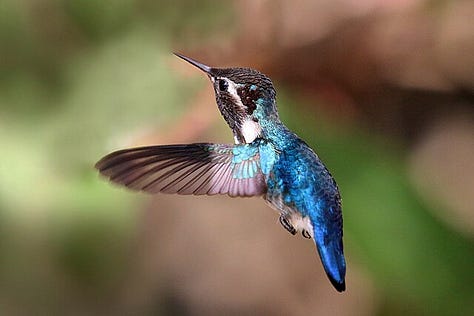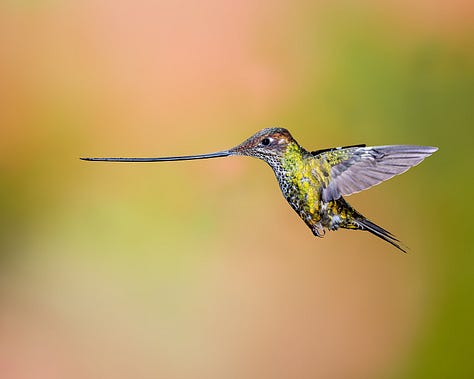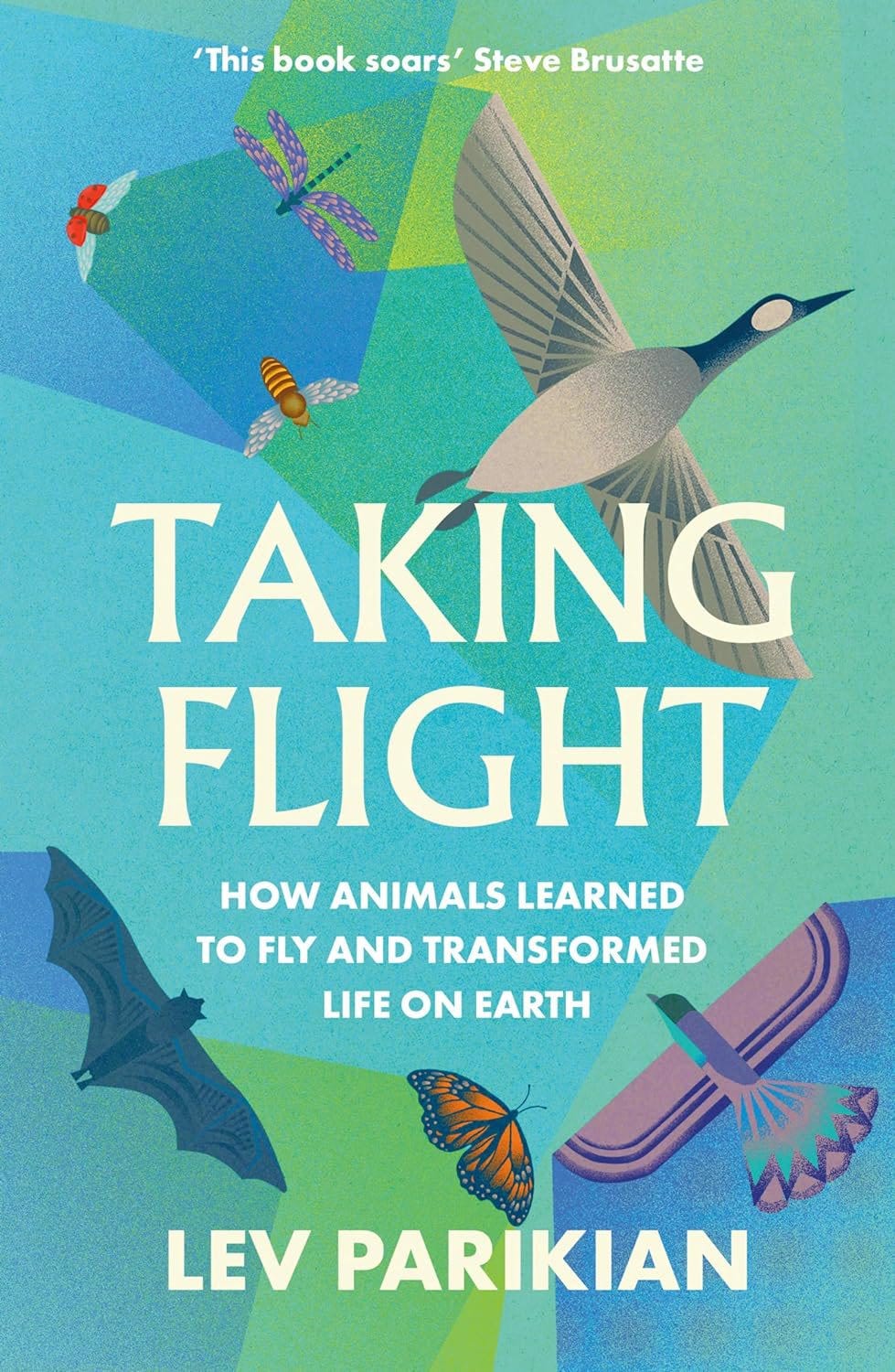It started with a bird. These things often do, I’ve found.
The bird in question was a blue tit, and it was doing an entirely normal, everyday thing which also happens to be a quasi-miracle.
All it did was fly from the hazel bush to the feeder and back again, but something about it made me think ‘hang on though’.
A couple of years later, Taking Flight was published. Because after that ‘hang on though’ there were a lot of questions to be answered. How, why, when, what, and so forth. The subject gripped me, even when I found myself deep in the weeds of areas of research that were, frankly, some distance removed from my comfort zone.
But it was worth it. I made – with a great deal of help from my wonderful editors Sarah and Pippa, who really earned their corn on this one – a thing of which I’m extremely proud. And, reassuringly, people seem to have been enjoying it.
Also, it got shortlisted for the Royal Society Science Book Prize, which (I quickly gathered) is quite a thing. I think it’s the only book written by someone who failed physics ‘O’ level ever to make that particular shortlist.
Anyway, today it’s out in paperback and audiobook, and on such days it’s obligatory to make a song and dance of sorts.
So I’m running a giveaway. All you need to do is comment on this post with:
a) your favourite flying creature
b) the reason(s) for your choice.
The ‘best’ entry (in the entirely subjective opinion of the judge, which is me) will get a signed copy of the paperback. Entries close at 2359 on Sunday 19th May, UK time.
If you have a distaste for receiving free things, or are too impatient to wait, here’s where you can buy it.
To celebrate publication day, here are Six Things about flight, which I hope might entice some of you to click on the link in the previous sentence.
Thing 1 – The First
One of the earliest questions I asked in the planning process was ‘what came first?’
The straightforward answer is ‘insects’. Of the four groups known to have evolved the power of flight – insects, pterosaurs, birds, bats – insects were by some distance the earliest, having sole ownership of the skies for well over 100 million years.
But when it comes to specifying the first insect to develop the ability, it’s all a lot more uncertain. The fossil record being what it is (incomplete, fragmentary, always late for meetings) there’s a lot we don’t know.
The earliest winged fossil we have is a thing called Delitzschala bitterfeldensis, from about 325 million years ago.
So easy to say that. ‘325 million years ago’. It’s unimaginable, really, especially when you think how long just a single Wednesday afternoon can feel.
Anyway, just look at that image for a minute – the curve of the wings, the delicate veining, all of it preserved perfectly from an impossibly distant time. And then contemplate the similarities between that and creatures we see buzzing around today – your mayflies, your dragonflies. It might just make you whisper ‘gosh’ (or whatever your monosyllable of choice is when you need to express wonder and amazement).
Here’s a video about the first flying insects.
Thing 2 – Dragonflies
Here’s a bit from the book.
The dragonfly’s mechanical proficiency, its optical acuity and the brainpower required to process the stream of information – all of this is simultaneously extremely primitive and extremely advanced. So primitive that the technology for it evolved around 300 million years ago and has survived basically unchanged since then, and so advanced that we humans, proud of our problem-solving ability, and curious and sophisticated enough to investigate and examine and analyse what dragonflies do and how they might do it, are only just beginning to understand how the technology works. And we still can’t replicate it. The field of flying robots is advancing rapidly, but our efforts to replicate a dragonfly’s flight capabilities in a model have so far resulted in something that is orders of magnitude bigger, slower, unwieldier, stupider, clumsier and harder to control than the real thing. Something, in short, that is nowhere near as good at being a dragonfly as a dragonfly is. Although, to be fair, they’ve had a 300-million-year head start.
Dragonflies might not be able to brew craft beer, throw a pot, write haiku, speak Polish, play the ukulele, make a ‘To Do’ list, find the end of the Sellotape, analyse sonata form, execute a perfect topspin lob, appreciate the elegance of a finely turned wooden bowl, devise holistic software strategies for implementing your long-range IT goals, or remove a stripped screw with a rubber band, but they don’t need to. They’re dragonflies – masters of aerial agility – and that is, by any measure, quite something.
Thing 3 – Pterosaurs
The unsung heroes of the world of flight – possibly because they’ve been extinct for 66 million years, so aren’t around to remind us of their brilliance on a daily basis – pterosaurs have been badly mistreated, in my view. The 200+ species we know about often get lumped in under one banner: ‘pterodactyls’. There was a pterosaur called ‘Pterodactylus’, and a very fine beast it was too. It was the first one to be found, so the name has stuck.
But there’s far more to the group than that. They were around for over 150 million years, living all over the world and in multiple habitats, and they count among their number the largest things ever to fly.
Take a giraffe. Give it wings. Imagine it soaring over your local high street.
That’s Quetzalcoatlus northropi, a simply ridiculous and magnificent beast whose wingspan, they reckon (‘they’ being very clever people who have devoted their lives to studying these things) was around eleven metres.
Take a minute to pace that out. I did, and then I had to have a bit of a sit down.
Let’s hear it for pterosaurs.
Thing 4 – Hummingbirds
Well, obviously. I mean, just look at them.






Thing 5 – Albatross
Is it the way they soar over the boundless ocean with nary a wingflap?
Is it their longevity (Wisdom, the oldest known living bird, is at least 70)?
Is it their famous monogamy (although the truth isn’t quite so clean and simple)?
Perhaps it’s their incredibly endearing courtship rituals, or their size, or simply that their ocean-going lives are almost completely alien to our own.
Whatever, we love an albatross. And quite right too.
Thing 6 – Gliders
We have to nod towards them. All those animals with the word ‘flying’ in their name. Flying fox, flying frog, flying snake, flying fish, flying elephant (that last one might be fictional – it’s been a long week, and I get confused). The rule of thumb I’ve developed is that if an animal has the word ‘flying’ in its name, then flying is the one thing it doesn’t do. It’s almost as if the people in charge of naming things don’t quite know the meaning of the word. To be clear, we’re dealing here with powered flight – getting yourself into the air and, crucially, staying there.
Which isn’t to say that gliding isn’t impressive. I’m absolutely here for gliding as a way of getting around – particularly if you live in a tall tree, like the famous flying squirrels. And who knows? If they really put in the hours, dedicate themselves to the craft, work constructively in tandem with evolution, perhaps they’ll develop the ability to propel themselves through the air rather than jumping off a tree and taking aerodynamic advantage of their (admittedly striking and attractive) limb-linking membranes (patagiums, if you want the proper word). See you here in a couple of million years to find out how they did.
And yes, they do count among them animals capable of short periods of flight. Jet-propelled flying squids, for example, which are quite the thing. And the brief burst of flight achieved by a fish keen to escape the less-than-tender ministrations of a hungry tuna is undeniably spectacular – even if as a result they might escape from the frying pan of the tuna’s jaws into the fire of the waiting beak of an equally hungry skua.
That’s life. It’s tough. But if you can fly, it might just be a little easier.




My favourite flying thing is a peregrine falcon.
As a kid they just seemed like the absolute coolest thing going, with the 'fastest animal alive' moniker. They were also scarce at the time, not the relatively common sight around tall buildings they are today. On holidays in Devon I saw buzzards and kestrels a plenty (I wasn't so bothered about little brown hobbies back then, they weren't cool enough) but never a peregrine. So when the opportunity came up to see one at an RSPB hide overlooking one of their nesting cliffs, it felt like the opportunity of a lifetime. We arrived and at first there was nothing but then we saw one of the pair launch out of the nest. Cue rising excitement from the gathered hoards. It circled about over the valley and then disappeared from sight. That would have been good enough but a few minutes later, far below us in the valley, a pigeon broke cover and flapped lazily across open ground. We held our collective breath and sure enough the peregrine reappeared and then dropped like a bullet onto the pigeon. What followed was not dissimilar to a band playing their biggest hit as the falcon flew nonchalantly back to the nest with its feast. That moment has stayed with me for 30-plus years and is one of the reasons I will always get excited when I see a peregrine, even if it just perched outside Battersea Power Station.
My favourite flyer is Amy Johnson.
She was a skilled and brave aviator.